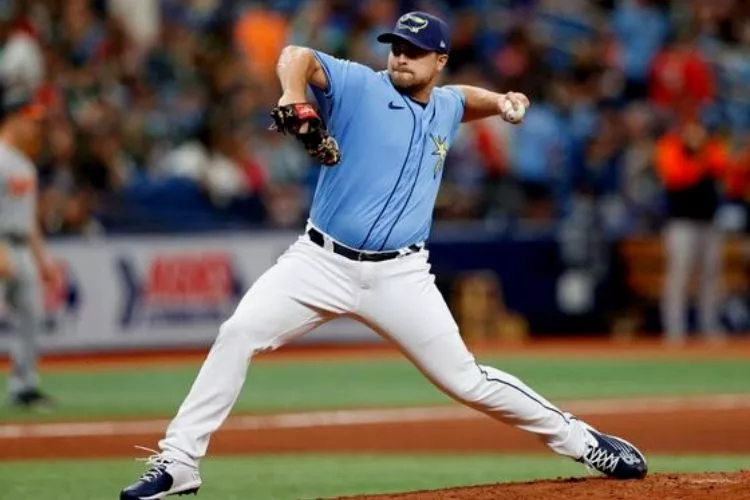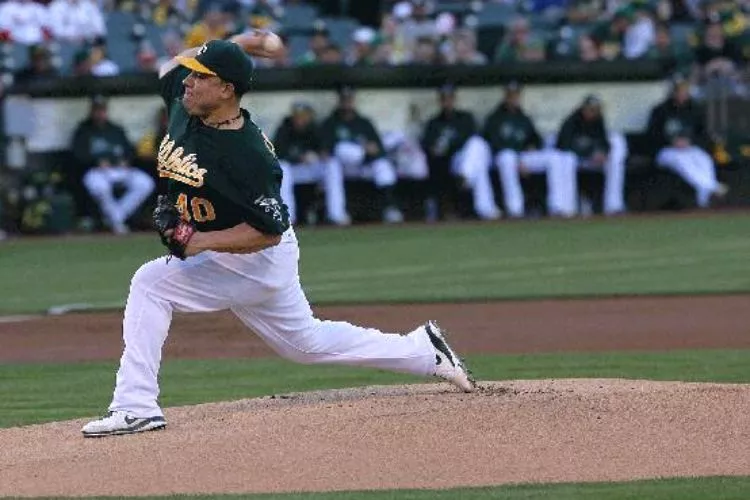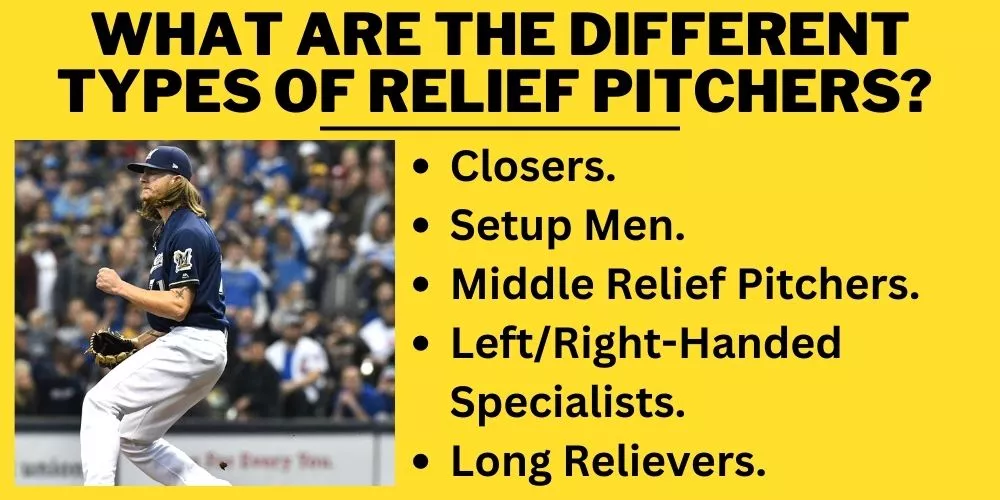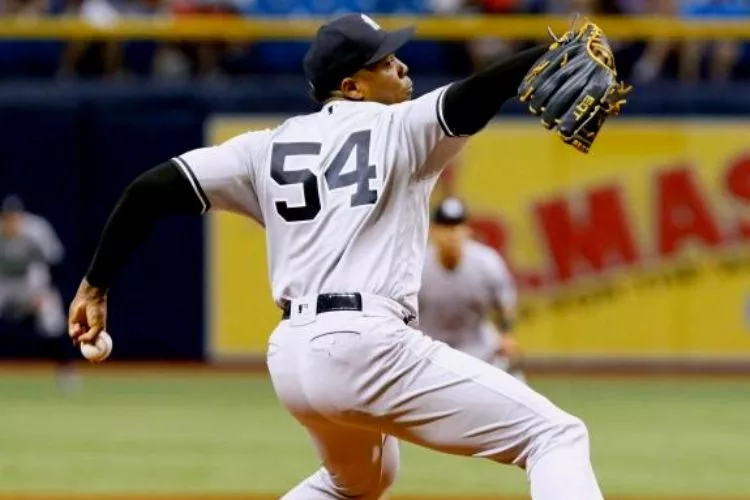It’s a common fact that in order to understand a game we must know the meanings of all the short forms related to the game. Baseball isn’t different, in fact most of the commenters use many short forms while talking about the game, so sometimes it becomes difficult to follow along.
In this series, we are explaining many popular baseball abbreviations. In fact, previously we have explained MVR, LOB, PO etc, and this article will reveal what does LRP mean in baseball.
The full form of LRP is long relief pitcher. The starting pitcher can be replaced by a long relief pitcher during or before the fifth inning of a baseball game for any probable reason.

Let us have an understanding of LRP in detail.
What does LRP mean in baseball?
LRP stands for Long Relief Pitcher in baseball. A long relief pitcher (LRP) is a pitcher who enters the game to control a situation going out of hand. There may be situations, such as the team’s first reliever having a bad outing, leaving runners on base, and putting them in peril of allowing extra runs.
A long relief enters the game when the game is going to lead to a situation of peril. The LRP enters the picture when teams seek pitching assistance during a game but cannot deploy their starting pitchers for various reasons.
Starting pitchers may have previously pitched numerous times or need to face tough competition several times through the batting order.
The team expects the LRP to pitch more and stay in the game for a longer time. LRPs do have more stamina than ordinary relievers. A starting pitcher will typically pitch five to seven innings per game, whereas LRPs can pitch two to four times that much or even more in the same game.
How often does a relief pitcher pitch?
As they are unlikely to throw more than 30 pitches in a day, relievers can choose to pitch harder than starting pitchers. The team may request relief pitchers pitch consecutively for 2-3 days, or sometimes more. Most relievers will need a day off after pitching for three days consecutively.
Why are relief pitchers not starters?
Several distinguishing features establish the difference between a starter and a reliever.
Starters will often have three or more pitches, allowing them to modify their pitches since they will be seen by the lineup 2-3 times throughout a given start. The more pitch types a batter must be aware of, the more challenging it becomes for a hitter to see.
Relievers typically have two because they don’t have to vary it up. After all, just three hitters will see them on any given night. Relievers can also pitch hard to maintain for more than a few innings.

Relievers are known to enter the game and immediately pitch with runners on. Starters do not generally practice being an expert in this skill. The relievers will pitch powerfully from a different stance, known as “the stretch”.
Relief pitchers may pitch in a way to keep the ball low to the ground level, which helps to escape jams with a double play. Hence they are also known as “ground ball specialists.”
Some experts believe those who fail as starters become relievers. But this may be a myth. Relievers are mainly specialists as compared to versatile starters.
What are the different types of relief pitchers?
Closers, setup men, middle relief pitchers, left/right-handed specialists, and long relievers are all casual roles for relief pitchers.

Closers
The team may assign a closer, the most refined reliever called to pitch the final few outs of games when his team is ahead by three runs or less. The entry of a closer is rare and can happen in a situation when the team is trailing or in a game that is leading to an end with a tie.
Setup Men
As closers were limited to one-inning specialists, setup men grew in importance. Setup pitchers frequently enter games with the team down or a tie game.
They are typically the team’s second-best bullpen pitcher, trailing only the closer. Setup pitchers became increasingly valuable after closers became one-inning pitchers, particularly in the ninth inning. A pitcher who excels in this capacity elevates to the position of closer.
Middle Relief Pitchers
A relief pitcher who normally pitches in the fifth, sixth and seventh innings of a regular baseball game is known as a middle reliever, also known as a middle relief pitcher.
Left/Right-Handed Specialists
Relief pitchers who throw left-handed and have expertise in pitching to weak right and left-handed batters and switchers-hitter known to bat right-handed poorly are left-handed specialists, also known as left specialists.
As baseball allows perpetual replacement, these pitchers may pitch to limited hitters, sometimes to only one in a game. They seldomly pitch to solely right-handed batters.
Most MLB teams have numerous left-handed pitchers on their books, at least one of whom is a left-handed specialist. LOOGY, or Lefty One-Out Guy, a term coined by John Sickels, is used for left-handed specialists that can be derogatory.
The right-handed batters and pitchers in MLB outnumber the left-handed ones. That’s why the Right One-Out Guy, or ROOGY, is less than the left-handed specialist and is occasionally featured.
Long Relievers
A long reliever, sometimes known as a long-relief pitcher, is a baseball relief pitcher who enters the game if the starting pitcher leaves early.
Are starting pitchers better than relievers?
Yes, starting pitchers also have a wider range of pitches — and superior command as compared to relievers, which is perhaps one of the reasons they are not relievers and are starting pitchers.

You you look back, relievers have pitched better than starters. But the trend is gradually changing, as starting pitchers with new technologies are fast enhancing their pitching efficiency.
What is the new relief pitcher rule?
The new rule says: Pitchers will have 15 seconds to throw a pitch with the bases empty and 20 seconds with a runner on base. Hitters should be in the batter’s box with eight seconds on the pitch clock.
Frequently Asked Questions (FAQs)
Where do relief pitchers warm up?
The pitchers will commonly warm up into the bullpen or pen area.
How many relievers do teams carry?
A team can carry upto 7 relievers in a game.
Who is the best reliever in baseball?
A closer is the best reliever in baseball.
Who is the greatest relief pitcher of all time?
The greatest MLB relief pitcher of all time is Mariono Rivera.
Who has the most strikeouts as a relief pitcher?
Trevor Hoffman has 1133 relief strikeout, which is the highest.
Can a pitcher win MVP?
Yes, there are instances in the back, where a pitcher was awarded MVP. Shohei Ohtani earned the American League MVP award in 2021, becoming the first pitcher in either league since Clayton Kershaw in 2014, and the first in the American League since Justin Verlander in 2011.
Conclusion
Relief pitchers take their positions on the pitching mound, which is in the centre of the infield and 60 feet, six inches from home plate. Relief pitchers join games once the starting pitcher is dismissed, usually due to poor play, a high pitch count, or injury.
Many relievers work only one or two innings in a given game. Most teams have a “long reliever,” who comes in to pitch two, three, or four innings in relief of a starting pitcher who was removed from a game too early. The long reliever can also be effective in extra-inning games when the game’s outcome is unclear.
